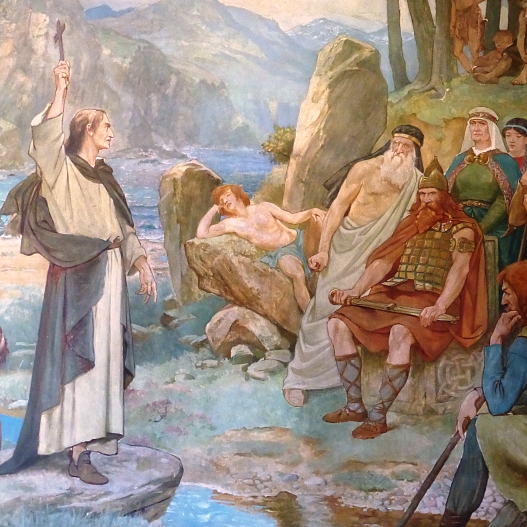O, King of the Tree of Life
The blossoms on the branches are your people
The singing birds are your angels
The whispering breeze is your Spirit.
Ancient traditional prayer
After the fall of the Roman Empire, an indigenous form of Christianity developed in the British Isles which was regarded by Rome with great mistrust. It celebrated the divine spirit in all living creatures and plants as well as in the human soul. Its legendary figures were hermits who lived in the forests, befriending the animals and birds, and pilgrims who traveled into remote areas to spread the gospel.
To both pagan and Christian Celts, religion was not removed from the activities of every day life. Celtic paganism recognized both gods and goddesses who appeared in nature as trees, animals or natural forces. The main places of worship were holy hills, springs, rivers, lakes, trees and in forests. Pagan Celtic spirituality embraced a connection between the material world and "otherworldly" realms. The transition from pagan practices and ideas of worship to Christianity was a moderate process which culminated in nature being seen as the handiwork of God rather than something with divine power in its own right.
Over the years Celtic ancestral holy places were altered gradually by Christian worship. Aspects of Celtic paganism that were not unacceptable were absorbed, while other elements were discouraged. The local legends of the old gods, goddesses and heroes were gradually reworked as episodes from the lives of Christian saints. In this way, the new Christian religion did not disrupt traditional society, but maintained its continuity and stability. The main change from paganism to Christianity came from the exclusion of women from most of their traditional religious roles. In the Christian church there was no place for priestesses or goddesses.
Celtic tradition recognized thousands of individual saints, many of whom were worshipped in Wales, Scotland, Ireland and Brittany as reverently as the pagan forerunners whom they displaced. In the medieval era these traditions were particularly prevalent. Although traditionally their lives are held to be role models of Christian righteousness, many of the more significant Celtic saints actually assimilated the representative attributes of the older gods, goddesses and elemental beings.

The Anglo-Saxon conversion in particular was a gradual process that necessarily included many compromises and syncretism (combining of different beliefs) ... Read more at Wikipedia.

The gods and goddesses of the pre-Christian Celtic peoples are known from a variety of sources, including ancient places of worship, statues, engravings, cult objects and place or personal names. Read more at Wikipedia